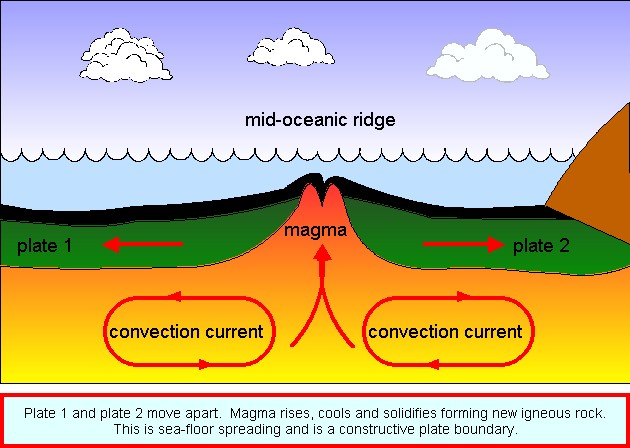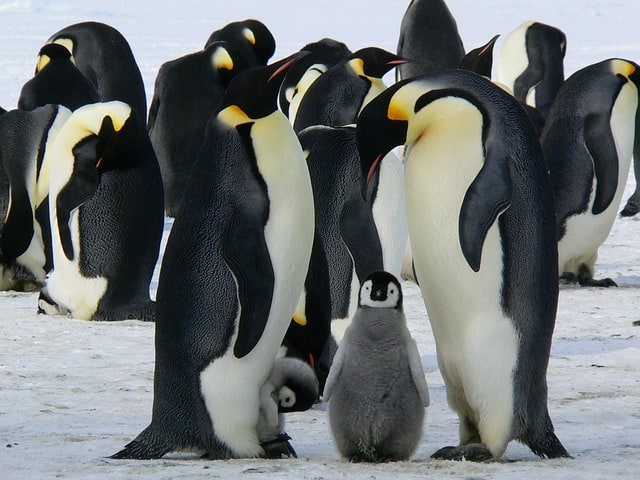What are Various Types of Forests and The Importance of Forests?

Simply defined, a forest is a vast area including a large group of trees. According to the Food and Agriculture Organization (FAO), Forest is a minimum “Land spanning more than 0.5 hectares with trees higher than 5 meters and a canopy cover of more than 10 percent or trees able to reach these thresholds in situ. It does not include land that is predominantly under agricultural or urban use.”
Using FAO’s definition, Global Forest Resources Assessment 2020 (FRA 2020) found that forests covered 4.06 billion or about 31 percent of the earth’s surface and in a study published in 2015 of Journal Nature said, these forests contain 3.04 trillion trees. However, forests exist in dry, wet, freezing cold, and scorching hot climates. A forest ecosystem is a community of organisms living in a forest.
There are different types of forests, categorized largely based on their distance from the equator. And if we understand the importance of forests, then we would know that a treeless world could spell doom for all lifeforms, including humans. A recent study of Yale University found that there are 422 trees available now for every single person. 1000 years ago there were 46% more trees compared to this estimate.
In that light, we look at some of the major benefits of forests. But before that, let’s explore the various types of forests.
Various Types of Forests
Forests are classified broadly by latitude, by amount and seasonal distribution of precipitation, or by macroclimate. Here we are discussing the three major types of forests classified by latitude – tropical, temperate, and boreal forests. Also, these major types are divided further into location, climate, temperature, flora and fauna and last but not the least, the sub-categories.
So, let’s dive deeper into the forests.
1. Tropical Forests
Tropical forests are basically rainforests since it rains more or less almost all year round. The average precipitation is 60 mm every month here. The Amazon of South America is the largest tropical rainforest on earth. Tropical rainforests have four characteristics which distinguish them from other forests.
- Very high annual rainfall
- High average temperatures
- Nutrient-poor soil
- High levels of biodiversity
Location: The tropical rainforests are found between latitudes 23.5o N and 23.5o S. These two are the Tropic of Cancer and the Tropic of Capricorn. Central and South America, western and central Africa, western India, Southeast Asia, the island of New Guinea, and Australia are the seat for this kind of forest. Amongst them, Brazil has the largest share of 3.17 million sq km.
Climate: Tropical rainforests boast the greatest diversity of species of all ecosystems on earth. They don’t experience winter and normally receive 100 inches of rain annually.
Decomposition happens at an incredibly fast rate in these forests, thanks to the high temperatures and moist air. High levels of rainfall normally result in leaching of nutrients from the soil. This explains why soils in tropical rainforests are nutrient poor.
Temperature: The temperatures in these forests range between [20°C] 68o and [25°C] 77o Fahrenheit throughout the year.
Flora and Fauna: Tropical rainforests are the habitat of two-third of the world’s plant species. Some of them are 100 million years old. These forests are dominated by broad-leafed trees, which grow between 82 and 115 feet tall. Other vegetation includes vines, ferns, mosses, orchids, and palms.
The sun hardly reaches the lower levels of the forest, thanks to dense-growing trees that create a thick canopy. So, most animals that inhabit tropical rainforests are adapted to living in the trees. You can find a wide variety of birds, snakes, bats, and monkeys in these forests. It is estimated that about half of the world’s animal species call tropical rainforests their abode.
Sub-Categories: Different categories of tropical forests include:
- Evergreen: Evergreen forests receive rain year-round and have no dry season
- Seasonal: They have evergreen vegetation and short dry season
- Dry: These forests have long dry season in which trees lose leaves
- Montane: Known as cloud forests as they receive most of the precipitation from mist or fog that rises from the lowlands
- Tropical and subtropical coniferous: These forests have dry and warm climate with conifers adapted to variable weather
- Subtropical: Sub-tropical forests are located north and south of tropical forests. Trees here are adapted to resist summer drought
2. Temperate Forests
Temperate forests are the second largest biome on this planet. They cover almost 25% of the world’s forest area. Five characteristics tell apart which forests are the temperate forests. And these are,
- A long, warm growing season
- Abundant moisture
- Typically rich soil
- Tree leaves are arranged in strata
- Trees stop photosynthesis during winter and enter a dormant period.
- Flat and broadleaf trees
Location: Temperate forests are located between the latitudes of 25° to 50° in both hemispheres. The countries covering this kind of forest are, eastern United States, Canada,France, Germany, Poland, Switzerland, and the Czech Republic, China, Japan, South Korea and parts of Russia.
Climate: Temperate climate is characterized by cold winters, hot-wet summers and precipitations all year round. The average rainfall in temperate deciduous forests is between 30-60 inches, while in temperate coniferous forests is between 50-200 inches annually. Soils are moist and rich here.
Temperature: The average temperature of temperate forests is 10° C per year. Daily it ranges between -30°C (-22°F) and 30°C (86°F).
Flora and Fauna: Temperate forests typically have three levels of plants with a great variety of species. The forest floor is covered with lichen, moss, ferns, wildflowers and other small plants. Shrubs fill up the middle level and hardwood trees like maple, beech, sycamore, oak, aspen, walnut, lime, chestnut, birch, elm, cypress, cedar, pine, douglas fir, redwood, and spruce etc fill up the top level.
The structure of vegetation of all temperate forests around the world are similar. This is why the animals and birds resemble the same regional type. Animals like black bears, deer, raccoons, opossums, porcupines, elks and red foxes along with birds like hawks, cardinals, spotted owls, and pileated woodpeckers live together in this biome.
Sub-Categories: Temperate forests are divided into two sub-categories:
- Temperate Deciduous forests
- Temperate Coniferous forests
3. Boreal Forests
The term boreal came from Boreas, the Greek God of the north wind. Boreal forests, also known as Taiga forests, are defined as forests growing in freezing temperatures in which trees can reach up to 5 meters minimum, with a canopy cover of 10%. The characteristics that separate boreal or taiga forests from other forests are,
- Evergreen trees
- Cold weather
- Dry climate
- Thin layer of soil
- Short growing season
Location: Boreal forests are located between latitudes 50o and 60o N. You can find them in Siberia, Canada, Northern Asia, and Scandinavia. It is worth noting that about 28% of the boreal forests are found in Canada, which is the largest share among the total boreal region.
Climate: Taiga forests are characterized by short summers and long winters. They receive between 15 and 40 inches of precipitation annually, most of which comes in the form of snow. These forests normally have thin soil, thanks to the cold temperatures that undermine the rate of decomposition.
Temperature: Temperature in boreal forests ranges from 21° C in summer to -54° C in winter.
Flora and Fauna: Trees in Boreal forests are largely evergreen. Examples of the trees include spruce, fir, pine, tamarack, trembling aspen, balsam poplar, and birch. The forest floor has limited vegetation, thanks to the dense canopy.
Animals that live in these forests normally have thick fur and are adapted to long, cold winters. You should expect to find animals such as moose, snowshoe hare, beaver, black bear, elk, snowshoe hare, woodland caribou, wood bison, lynxes, yellow perch, northern pike, walleye, wolves, and wolverines, and a plentiful number of shorebirds, songbirds and raptors.
Sub-Categories: In countries like Canada, Norway, Sweden, Denmark and Finland, the boreal forest is generally divided into three subzones:
- The High Boreal (northern boreal/taiga zone)
- The Middle Boreal (closed forest)
- The Southern Boreal (closed canopy)
Now that you know the main types of forests, let’s look at the importance of forests.
Importance of Forests
The world’s forests play an integral role in not only the wellbeing of their inhabitants but also in the overall health of other lifeforms on the planet, including humans. Some of the major benefits of forests include the following:
1. Climate Stability
Forests contribute greatly to the Earth’s ability to maintain its climate, thanks to the effects of photosynthesis. They help in averting climate change as they take the greenhouse gas carbon dioxide away from and release oxygen into the environment.
In that way, they help in purifying the atmosphere and controlling the increasing temperatures.
2. Ecological Benefits
Forests help avert soil erosion by minimizing the force of rainfall on the soil’s surface. They also absorb water, preventing runoff that would otherwise wash topsoil away.
Moreover, forests act as water filters. They collect and store water in addition to replenishing underground aquifers. Forests also enhance the atmosphere’s humidity through perspiration, which affects rainfall and temperature.
3. Biodiversity
No other biome on earth contains a greater range of biodiversity than forests. This explains why only a fraction of species found in forests have been studied. A vast range of trees and plants found in tropical forests encompass especially intense biodiversity.
4. Economic Importance
We obtain numerous benefits from forest ecosystems. Many communities around the world survive on vegetation and animals found in the forests.
Most medicines and pharmaceuticals are products of plants that have been derived from forests. Many manufacturing industries get their raw materials from forests, such as wood and paper. Other beneficial forest products include gums, spices, and dyes.
Forests also add to the aesthetics of our environment and promote ecotourism.
Bottom Line
Forests are large areas covered in trees and they occupy about a third of the earth’s surface. The benefits of forests to their inhabitants and to the diversity of life are endless. They uphold climate stability, promote biodiversity, and contribute to economic development. And they are the world’s largest storehouses of carbon after the oceans. Hence, it is imperative that forests are protected from deforestation and other detrimental effects of human civilization.






